#katsura keiko
Text
Karyukai Book collection, 2022 edition
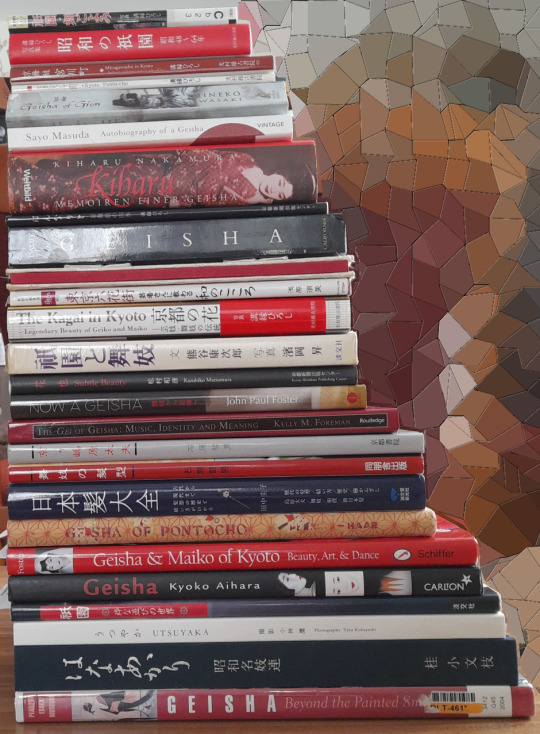
It’s been a while since the last book feature on this blog. The collection has grown, maybe you are also interested in Gei-/Maiko related books and find this helpful.

Category 1: Japanese only or Japanese with only little English
…Hiroshi Mizobuchi - Showa no Gion: b&w photos depicting life in Gion Kobu in the 1970’s and 80’s. Captions are entirely in Japanese, but easy to translate, since they are mostly dates and names. At the end of the book, there are few pictures from the 1930’s and 40’s.
…Sumi Asahara - Tokyo Rokkagai: Interviews with Tokyo Geisha, history and map of the main six Tokyo Kagai, old and new photos. Books on the subject of Tokyo Geisha are fairly rare, so this is a good source of information.
…Hiroshi Mizobuchi - Hannari Kyo Maiko no Shiki: photos of the seasonal events and celebrations in the Kyoto Hanamachi, with Map and full Ochaya list.
…Keiko Tanaka - Nihongami taizen: despite featuring Maiko Fukuno on it’s cover, only a little part of it deals with Maiko Nihongami. It has a bit of Tayu/Sumo/new Nihongami as well, the largest part however is focusing on the various historical hairstyles displayed at the Kushi Matsuri.
…Kobunshi Katsura - Showa Meigiren: featuring portraits of 228 senior Geisha in the late Showa period. Some of them worked in Hanamachi that no longer exist, 31 of them are still active in 2022.
…Tetsuo Ishihara - Maiko no kamigata: showing Maiko hairstyles, how to tie them, Kanzashi calendar, Pocchiri showcase, and a Maiko getting dressed
…Tetsuo Ishihara - Kyo Shimabara Tayu: similar to Maiko no Kamigata, but focusing on Tayu hairstyles. Contains a little overview about the then-current Tayû and some of their activities around the year.
…Hiroshi Mizobuchi - Gion, the world of stylish parties: Photos by HM (mostly Gei/Maiko, but also some Hanamachi architecture and food), Maiko illustrations, old (Taisho/early Showa) photos of Gion Kobu Gei-/Maiko and interviews with selected Gei/Maiko and Karyukai workers.
…Noboru Hamaoka - Gion to Maiko: mostly b/w photos, some colour photos featuring people who live in the Karyûkai: including Gei-/Maiko, dance teachers and hairdressers, Gion’s cityscape, Kanzashi and Okiya interior. More text than photos.
…Hiroshi Mizobuchi - Kyo Miyagawacho: Photo book, bit of history, events through the year. “History of Miyagawacho” by the then head of the Ochaya Union fully translated to English, otherwise the main content is in Japanese. Miyagawacho map and Ochaya list on the last pages.
…Hiroshi Mizobuchi - Kyo Pontocho: similar to Kyo Miyagawacho, but smaller format and less text
…Hiroshi Mizobuchi - Gion Mai Goyomi: HM photos on abysmal tiny pages. Can’t recommend. Heard there are two editions of this, that differ, so maybe the other one is bigger?
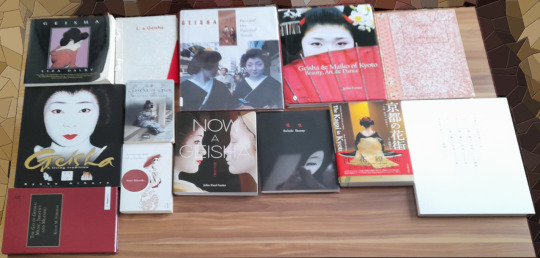
Category 2: English or Japanese with full English translation in the same book.
…Liza Dalby - Geisha: LD lived in Kyoto and worked with Pontocho Geiko in the 1970′s. In this book, you can read about her experiences
…Kikuya - I, a Geisha: written by an Akasaka Geisha, has infos about her profession, some infos about the history of selected Tokyo Hanamachi.
…various - Geisha: beyond the painted smile: lots of text but only little content. Few nice photos. Only worth buying if it’s really cheap.
…John Paul Foster - Geisha and Maiko of Kyoto: portraits of and interviews with several Gei/Maiko, studded with anecdotes of JPF’s experiences as photographer in Kyoto.
…Percival Perkins - Geisha of Pontocho: Experiences with Pontocho Geiko and Maiko in the 1950’s and short biographies of selected GeiMaiko.
…Kyoko Aihara - Geisha: good and basic book from the late 1990′s focusing on Hanamachi life in Kyoto. You can spot some familiar faces of Geiko who were Maiko then, or Geiko who just retired recently.
…Mineko Iwasaki - Geisha of Gion: autobiography of one of the most famous Kyoto Geiko, including anecdotes from her elders (for example, concering life in the Hanamachi during WWII)
…John Paul Foster - now a Geisha: while “Geisha and Maiko of Kyoto” offers a rather broad spectre of topics, this is focused on the change from Maiko to Geiko: Sakko and Erikae. JPF portrays three Maiko, then Geiko during this time of transition.
…Kazuhiko Matsumura - Subtle Beauty: originally a photo essay published in a newspaper. It’s about Maiko and Geiko from the five Kyoto Hanamachi in all stages of their carreers.
…Hiroshi Mizobuchi - the Kagai in Kyoto: probably the only HM book mostly translated to English. Apart from being an updated version of books like “Kyoto Gion, Kyoto Pontocho, Kyoto Miyagawacho”, an entire chapter is dedicated to Satsukis way from Shikomi to Geiko.
…Taka Kobayashi - Utsuyaka: full-page photos of Kosen (Gion Kobu) with only little text. The book itself is a pretty large format, so you can have a good look at her outfits.
…Kelly Foreman - the Gei of Geisha: densely packed with information on around 250 pages, concerning arts, economy and the social aspects of being a Geisha.
…Sayo Masuda - Autobiography of a Geisha: SM endured a lot of abuse from childhood on, was sold to an Okiya in Kamisuwa Onsen at the age of 12 and worked as a Geisha until she was “bought” by a patron around 1939.

Category 3: originally published in Japanese, available in lots of different languages, but not English.
…Kiharu Nakamura - Memoiren einer Geisha: KH worked as Geisha in Shinbashi for around 2 years in the early 1930′s. Only around 20% of the whole book deal with her time before retirement, so the title is a bit misleading. Nevertheless, it’s a nice source of information on pre-war Shinbashi.
82 notes
·
View notes
Note
4, 5, 6, and 7 for the artist ask?
Thank you for the asks @phantomseptember ! And thank you for asking consecutive numbers xD
Favourite things to draw?
Oh wings by far! I just love drawing them and doing all the feathers is just balm for my soul. Hair is a close second, too xD I also love drawing fir trees xD
Anything you haven’t drawn yet but want to?
HMMMM. Well, there's a few characters of mine that I've never really properly drawn, which is kind of embarrassing… but at the same time I'm so slow and bad at just sketching away so I guess it is only to be expected.
There's more stuff that I know I got to draw in my comic at one point, but I feel more "oh fuck how am I going to survive drawing that" rather than eager anticipation xD
Which artists inspire you right now?
I think Shirahama Kamome (drawing Witch Hat Atelier) is one of my current biggest inspirations, she's just amazing. Sublime. Not of this world. I love her manga so much.
I also really love the style in Toiletbound Hanako-kun by AidaIro, it might not be such a straightforward inspiration as with Shirahama, but they're a great inker and I love the unique style!
70's shoujo manga has been inspiring me for years too, and will probably keep doing so to the foreseeable future. I just love the visual storytelling they've got.
Favourite works of all time excluding your own?
Haha like hell I'd think my own pieces are the greatest of all time xD
Hmmm… I think most of the biggest favourites I have are comics instead of singular pieces of art, but to list a few: the later volumes of Berserk by Miura Kentarou, the later volumes of Descendants of Darkness by Matsushita Youko, the later volumes of D.Gray-Man by Hoshino Katsura, Deva Zan by Amano Yoshitaka, the works of Takabatake Kashou, Takemiya Keiko, Hagio Moto, Kamome Shirahama, Yamamoto Takato…
I can't for the life of me remember a singular piece of art that I would consider an ultimate favourite :'( I haven't been to a museum in literal years thanks to corona and not really affording a museokortti, so I've been living in the world of comics… And I think that's okay, I like art that tells stories ^^
6 notes
·
View notes
Photo

Yoshiko Sakuma, Sayuri Yoshinaga, Yûko Kotegawa, and Keiko Kishi in The Makioka Sisters (Kon Ichikawa, 1983)
Cast: Yoshiko Sakuma, Sayuri Yoshinaga, Yûko Kotegawa, Juzo Itami, Keiko Kishi, Yonedanji Katsura. Screenplay: Shin’ya Hidaka, Kon Ichikawa, based on a novel by Jun’ichiro Tanizaki. Cinematography: Kiyoshi Hasegawa. Production design: Shinobu Muraki. Film editing: Chizuko Osada. Music: Shinnosuke Osawa, Toshiyuki Watanabe.
Lovers of romantic historical costume dramas like the Merchant Ivory movies and the flood of Jane Austen adaptations will find much that's familiar in Kon Ichikawa's The Makioka Sisters. The lushly melancholy scene at the beginning of the film, in which the sisters walk through the blossoming cherry orchards in Kyoto, accompanied by an instrumental arrangement of Handel's aria "Ombra mai fu" from Serse, anticipates by two years the scenes in Tuscany in the Merchant Ivory version of E.M. Forster's A Room With a View (James Ivory, 1985) that are set to music like Puccini's "O mio babbino caro" and "Chi il bel sogno di Doretta." The plot consists of finding a husband for one of the sisters, Yukiko (Sayuri Yoshinaga), whose marital prospects are endangered by the unconventional behavior of her younger sister, Taeko (Yuko Kotegawa), just as Jane and Elizabeth Bennet's were by the scandalous behavior of their sister, Lydia, in Pride and Prejudice. And just as Austen's novels took place against the distant background of the Napoleonic wars, so do the Japanese military incursions into China -- the film begins in the spring of 1938 -- recede into the background of the domestic problems of the Makioka sisters. There are four Makioka sisters, the proud remnants of a family whose male line has died out, but the husbands of the two oldest sisters, Tsuruko (Keiko Kishi) and Sachiko (Yoshiko Sakuma), have adopted the family name and are helping rebuild its fortunes. The sisters adhere to the family tradition that older sisters must marry before younger, which Taeko, the youngest, rebels against. As the film begins, she has already tried to elope with the irresponsible Okuhata (Yonedanji Katsura), and although the family thwarted that attempt, the story made it into the newspapers, which incorrectly reported Yukiko as the one who tried to elope. The family demands a retraction, but the newspaper only issues a correction. Yukiko is beautiful but shy, and attempts by a matchmaker to arrange a marriage for her have fallen through. There is a wonderful scene in which the family goes to meet a suitor, who turns out to be a terrible but funny bore. Ichikawa, who co-wrote the screenplay with Shinya Hidaka, develops and individualizes the characters of the sisters and their husbands well, and stays just this side of romantic sentimentality. The cinematography by Kiyoshi Hasegawa makes the most of the colorful settings -- spring cherry blossoms and autumn foliage -- and especially the beautiful costumes of Keiko Harada and Ikuko Murakami. Only occasionally does the note intrude that this is an ephemeral world, soon to be swept away by war.
0 notes
Text
Changing Tides - Chapter 1
Fandom: Hakuouki
Setting: While set in the Hakuouki Universe this story follows my OC Katsura Keiko who is operating as an agent for the Choshu. I make a lot of references to historical events, that aren’t directly adressed in Hakuouki, so if there are any questions, I’ll be more tha happy to answer them. Another important character is Takasugi Shinsaku, who I know appears in Hakuouki: Urakata, but since I didn’t play this game the Takasugi in my story is very much my own creation.
I want to thank the wonderful and amazing @himiko-omikami, @aetherium-weaver, @annedey and @gingersilvy for always listening to my ideas, their input and finally the beat reading! Thank you girls <3

Prologue
November 3rd 1859, Edo.
Her father knelt down on the straw mat in perfect composure, dignified and calm, wearing the white shini-shōzoku she had brought to his prison cell earlier this day at his request. To receive the kimono had been his greatest concern in his last hours, along with giving his daughter the paper bearing his death poem, which she now held in her clenched fist as she stood in the small crowd assembled before the scaffold. Behind her father’s seated figure the executioner approached, unsheathing a katana from the scabbard on his left, and Keiko knew whatever would happen next, she would not look away. It was the last thing, the only thing she could do for her father. Then there was a flash of light as the blade swung through the air, the gurgling sound of something wet being cut and a thunk as her father’s headless body hit the floor. She felt her body shaking and her lips quiver, but she didn’t blink for a moment. Somewhere through the thick wall of numbness surrounding her, she heard one man say “He didn’t even flinch. A truly noble death,” as if this was something to be glad about. A snort slithered its way in her heavy breathing. A noble death, yes. What a fitting conclusion to a life led in honour. It had been her father’s highest value and virtue. The honour of the family, the honour of a man, the honour of a samurai. She knew many preached it but only few could live up to it and her father had been one of these few. But where had it led him? Whenever she had visited him during his arrest, she had pleaded with him to cut the ties to Yoshida Shoin, pledge fealty to the shogunate, deny any knowledge of the assassination plot against Ii Naosuke. It fell on deaf ears. He couldn’t do this, her father explained, because denying all he believed in wouldn’t be honourable. She asked if living with his daughter wouldn’t be worth it. He had only given her a sad smile in return. Why were men always so eager to die for honour? Didn’t he see he was all she had left in this world? Angrily she crumbled her father’s death poem in her fist. She hadn’t read it, never would. It was only a reminder that her father had chosen honour and death over life, over her. She remembered how distraught he was, when he learned that he would not be allowed to commit seppuku but was sentenced to death by execution. For Keiko it had made no difference then, he would be gone either way. Now the blood dripping from the scaffold filled her heart like acid. Yes, her father had been an honourable man, but he had died a traitor’s death. His honour was forever taken away by the Tokugawa Shogunate, just as they had taken him away from her forever. She remained behind, utterly alone. Tears filled her eyes and the ground was pulled away from underneath her feet and she knew she would crack any moment, just as two hands grabbed her by the shoulders. Steady and strong, they pulled her back on the earth and helped her to stand straight the way her father would have wanted her to. Slowly, Keiko turned her head around. Brown eyes with golden flecks, as warming as a flame, were staring back at her.
“Don’t worry Katsura-san.” Takasugi Shinsaku smiled. Even then, she couldn’t help but notice the dimples in his cheeks. “I will take care of you from now on.”
Chapter 1
September 1864, Kyoto.
Her eyes flew open just for her to cover them immediately with her hand to shield them from the morning sun. Unnerved Keiko let out a groan as reality hit her with the light. It was just a dream. Of course it was. Her father had died five years ago on the execution grounds of Edo, Keiji and her mother even long before that and she was no longer a little girl, running around on the beach. Slowly Keiko moved her hand aside. Where was she? The room was nothing special, with just a table and a bowl, presumably a washing pan, as an interior, not counting the futon she lay on. Through the shoji door she could see the silhouettes of people hurrying in the early daylight. Ah yes, the Teradaya. She had spent most of her nights in the past years in so many inns which looked all the same, it was hard to keep track. But now, as the last traces of the dream faded, she remembered. She was in Kyoto, more precisely in Fushimi. With another groan, Keiko turned around and buried her head in the soft futon. She didn’t want to get up, not yet, wanted to indulge in the memories of the past, in the moments of happiness just a little bit longer. Besides, sleeping was such a worthwhile and wonderful pastime. However, the rising sun was not very cooperative and finally Keiko had to admit that the inevitable couldn’t be put off any longer. Sighing, she rolled out of the futon and stretched herself before washing the sleep from her face and body with lukewarm water. Her clothes were scattered all over the room, so she got dressed piece by piece, after carelessly throwing the white yukata she wore for the night on the disheveled futon. First the socks, then the light blue kimono shirt with the apricot prints on it and eventually her favourite pair of hakama, indigo blue, the same colour as her eyes. Finally, she found her yellow ribbon and tied up her tousled mahogany curls into a boyish ponytail. Once Keiko decided she looked presentable, she folded the futon more messily than neatly and chucked it into one corner of the room, before grabbing her bag. Like every morning she quickly peeked inside it, just to make sure that the shiny black gun was still there.
The entrance hall of the inn was buzzing with people coming and going as usual. The delicious smell of hot tea and dumplings filled the air. Just as Keiko wondered how many cups of sencha she would need, before she could think about what to do today, Isuke, the innkeeper, approached her.
“Sir… I mean, Miss… ahem, Hori-san?”
It took all of her self-discipline not to burst into laughter. Unlike his wife Otose, the poor man had been confused about her gender since she had arrived at the inn some months ago. Apparently it was still hard for him to combine her manly dress with her petite stature and feminine features. Finally, he seemed to regain his composure.
“This has been deposited for you by a gentleman early this morning.” In his stretched out hand he held a small piece of paper.
“Oh? His name wasn’t Saitani by accident?” Keiko asked smiling. Before the landlord got the chance to answer, she opened the paper and started reading. At the words a wide grin she couldn't suppress even if she had wanted to appeared on her face. Hastily, Keiko crumpled the message, before tugging it into the bag on her side.
“Thank you very much.” Still beaming, she strolled out if the door, humming to herself.
The streets of Kyoto were full with people going about their business, despite the weather. Kyoto summers were known to be brutal but Keiko didn't mind the humid heat that much. It reminded her of Hagi, though at least there a refreshing breeze would blow from the ocean now and then. Nonchalantly she made her way through the crowds, a slight spring in her steps and reveling in the pulsating life around her. People exchanged idle chatter or called out for bypassers to halt at their shops and have a look at their goods. She was not too familiar with Kyoto, however she trusted her natural sense of direction enough to find the way to the teahouse somehow, so she didn't mind the distraction around her. More than once playing children seemed to appear out of nowhere before her feet, causing her to almost trip over them, but Keiko simply laughed it off. Today was a good day. She liked the city, at least more than many of the other places she had been to, although Kyoto wasn't exactly a safe place for her to be, even more so after what had happened at Hamaguri Gate just the other day. Keiko wondered if the Kinmon Incident had something to do with the message in her bag. As she pondered about this (and the question if she should get some dango) she noticed a small, grey stray cat at one of the shops. Smiling, Keiko approached it and knelt down, one hand stretched out to lure the cat to her, so she might pat it. However, a sudden shift in the crowd caused the cat to perk up and hush around the next corner. The people grew more or less silent and ushered to the side of the streets. Keiko turned around, looking for the source of the commotion. Soon the light blue and white haori came into view.
“Damn bakufu dogs,” she muttered.
Casually, Keiko trotted to the side and leaned against a house wall, waiting for the group of armed men in uniform to pass. Even after, or maybe because of, their latest successes the Shinsengumi were still feared and hated by the citizens. Kyoto never liked the shogunate, this was something Keiko and the city had in common. If looks could kill, she definitely would try with those bastards. When they had finally disappeared from her view, Keiko continued on her way to the teahouse. This time, with more hurried steps and in the opposite direction from the Shinsengumi patrol.
Eventually she reached her destination, with some delay however. Inside she stopped one of the waitresses, who seemed about her own age, and asked for Mitani Wasuke. Smiling, the young woman tucked some strands that had loosened out of her messy dark brown bun behind her ear and directed her to a private room in the back. Keiko could hear her heart beating as loud as drums as she opened the shoji but the moment she laid eyes on the man inside, it skipped for a beat. She rushed in, throwing her arms around him.
“Takasugi-kun”, she whispered breathlessly and buried her face in his chest. He was so much taller than her.
Takasugi quietly chuckled as he returned her embrace with a steady and firm grip, the way he had held her so many times before, and leaned down so she could feel his tingling breath in her hair.
“Keiko-chan.” She could hear from the tone of his voice that he was smiling.
“Get a room, you two! Or at least let us others leave.”
Baffled, Keiko opened her eyes again. She had been so focused on Takasugi that she hadn’t even noticed the other men, but she knew that wicked smirk greeting her.
“My Lord Shiranui.” Grinning she let go of Takasugi and mockingly bowed her head to him. She should have known he would be here too. The demon rarely left Takasugi’s side.
“Hello Princess. Look at your face, it’s so red you could set the whole city on fire with it,” he teased.
“Oh, that would be a shame!” Keiko replied still grinning, despite her embarrassment.
“I wish you would shine like this everytime we meet, Keiko-chan!”
Surprised Keiko bolted around to the speaker. Sakamoto’s wide smile was as charming as always, maybe even more so in direct contrast to his companion Nakaoka, who wore his usual grumpy expression.
“Huh? What are you doing here?” Keiko asked.
Although Sakamoto’s and Takasugi’s views differed concerning Japan’s relations to the foreign forces, the two man had put aside their differences on the matter for a time in favor of their common goal to remove the Tokugawa Shogunate from power and make Japan stronger, Keiko knew that. She even had some dealings with him and Nakaoka in the past few months. However she had thought that the Kinmon Incident had put an end to their cooperation.
Sakamoto pouted playfully. “Oh c’mon, aren’t you at least a bit happy to see me?”
She waved her hand dismissively. “It’s nothing personal, Sakamoto. I just thought we were enemies now? I mean the Satsuma fought against the Choshu at Hamaguri Gate, or am I wrong? Political alliances change so often these days, it’s hard for me to keep track.” Keiko shrugged.
“Ah, but you forget we are not working directly for the Satsuma but building an alliance between them and the Choshu. And that’s still what we hope to achieve, although you,” Sakamoto turned towards Takasugi, “ stupidly decided to kidnap the emperor.”
Keiko nodded. “Yeah, that was not the best move. Why did the Choshu do that, Takasugi-kun?” The first time the local Choshu imperialists had told her about their plan, Keiko had chocked of laughter until she realized they were serious. She had written to Takasugi immediately.
“It wasn’t my idea! Believe me, I would have stopped them, if I could, but I was busy with those westerners!” Takasugi raked his long, slender fingers through his short brown hair.
“At least it was entertaining. I met one of those Shinsengumi bastards, he was a fun distraction,” Shiranui remarked with his typical smirk and Keiko snorted. She knew Shiranui’s definition of fun all too well.
Just as Keiko wanted to inquire, what exactly happened at the Imperial Residence, Nakaoka grunted. “Stop that silly banter, and let’s go to business!” And with that he sat down.
Keiko perked one of her eyebrows up and exchanged a knowing look with Sakamoto. It was so strange that a man as relaxed as him could be friends with Nakaoka, who constantly looked as if he had to look after a bunch of naughty children. She sat down cross legged, opposite from Sakamoto and next to Takasugi, while Shiranui placed himself to his left. Takasugi handed her a cup of delicious smelling hot tea. Gyuokuro, her favourite one. He always remembered these little things, she thought, smiling into her cup. Looking around Keiko realized someone seemed to be missing.
“Is Katsura not joining us?” she spoke up, before one of the men could say anything, which earned her another glare from Nakaoka.
“Aw, are you worried for your little cousin, sweetheart?” Shiranui grinned at her.
“He’s not my cousin!” Keiko protested.
“Oh? Don’t you both belong to the Katsura family?” the demon inquired, as if he wouldn’t know.
“Yeah but Kogoro is adopted and even though, he would be like my cousin three times removed? Maybe even four times, who knows?” She fidgeted with her fingers through the air as if she wanted to draw a family tree. “I’m just asking, because I haven’t heard anything of him since before Ikedaya.” Keiko clarified.
“If you are worried something happened to him during the Ikedaya raid, I can soothe you. He wasn’t even there that night.” Sakamoto remarked.
“Huh?” That surprised her. Katsura Kogoro was one of the most influential and vocal Choshu politicians in his desire to return the power from the shogun to the emperor. Keiko herself couldn't care less about the man, but for him to be missing out on an imperialist meeting was strange.
“That geisha, who got infatuated with him, tipped him off. Heard he spent the days after Ikedaya under a bridge posing as a beggar. Maybe I should get myself a geisha lover as well, they seem to come in handy,” Sakamoto explained with amusement in his eyes.
Keiko scoffed at the thought of the high and mighty Katsura Kogoro living under a bridge, dressed in rags. The clever bastard.
Nakaoka sighed in annoyance and crossed his arms before his chest. “As if you had need for that, Sakamoto. Only on our way here we had to stop four times so you could flirt with random girls!”
“You counted?” Keiko snickered.
“It’s not my fault that Kyoto has so many pretty ladies,” Sakamoto replied with a wide grin.
Takasugi had remained silent during their exchange but now he raised his voice, “Katsura left Kyoto and we can't stay here either. After what happened at Hamaguri Gate, the bakufu will no longer be lenient with Choshu and we don’t have the strength to fight back. Not after Shimonoseki. Furthermore, some of our own want to reconcile with the shogun in order to safe the domain.”
Keiko had figured this would be the outcome of the meeting. Takasugi had been wrestling with more conservative forces inside the Choshu Domain for some time now and after the Kinmon Rebellion it was only reasonable for them to leave the city for a while. As much as she had come to like Kyoto, it was nothing compared to being by Takasugi’s side again. She would live in a shack in the woods if it meant to be with him.
“Alright! Where will we go?” Keiko exclaimed enthusiastically.
Takasugi hesitated only for a blink before answering, but Keiko noticed anyway. A knot started to build in her stomach. Something was wrong.
“Shiranui and I will gather the Kiheitai in Kokura. Yamagata Aritomo, Ito Hirobumi and Inoue Kaoru will also come. Once we have regained the upper hand within Choshu, Katsura wants to negotiate a new alliance with the Satsuma.”
“Understood.” Sakamoto, suddenly serious, and Nakaoka nodded in unison.
“When will we leave for Kokura?” her voice was a pitch higher than usual. She tried to catch Takasugi’s gaze but he pointedly avoided to meet her eyes. Yes, something was very wrong. “Takasugi-kun?” she asked sharply.
Shiranui rolled his eyes. “Man, just tell her, Takasugi.”
“Tell me what?” Keiko grabbed Takasugi’s arm, which finally caused him to look at her. She didn’t like what she saw in his face.
Finally he sighed. “Keiko-chan...you won’t come with us.”
For a moment she thought she had misheard his words but there was no way she could misinterpret the pained look in those warm, brown eyes she loved so much.
“Oh.” It was all she could say to that. Letting go of his arm, she turned away from him, so he wouldn’t see her disappointment. She had been away from Takasugi for almost half a year now, the longest time they had ever been apart since he had taken her in after her father’s death. When Takasugi had asked her to go to Kyoto, to be his eyes and ears in the capital, Keiko had hoped, no expected, it would only be a temporary separation, but apparently she had been wrong. Maybe he was tired of having her around. The thought left a bitter taste in her mouth.
As if he had read her mind, Takasugi explained, “You know I would rather take you with me, Keiko-chan, but the situation is...complicated.”
These words were enough for her to meet his eyes again.
“In the last few months both the Choshu and the Satsuma have been approached by a doctor from Edo called Kodo Yukimura. He said he has some sort of...medicine that could help us overthrow the Tokugawa Shogunate,” he continued, carefully weighing every word.
Keiko frowned. This raised more question than it answered, at least for her. “And what does this have to do with me?”
“I don’t trust him. What he promised seems to good to be true.” Again, Takasugi raked his fingers through his hair, as he always did when something was upsetting him. “Keiko-chan, I need you to go to Edo and find out what you can about him.”
Edo. Keiko’s heart beat faster at this word. Light reflecting off a blade, blood dripping on the floor, an honourable death. She inhaled sharply.
“No! I can’t go to Edo! Not alone! Don’t make me do this, Takasugi-kun!” she pleaded desperately.
Takasugi’s smile was bitter. “I know I’m asking a lot of you.” he conceded. “I would investigate myself, but I can’t show my face around Edo or my head would likely end up on a spike.”
The picture found its way into her imagination without much difficulty, mixing up with her memories of that day in November many years ago. She shook her head to get rid of it.
“And we gotta deal with these Choshu dastards, who want to crawl back to the shogunate,” Shiranui added. He undoubtedly looked forward to this.
“If there was another option, I would have chosen it instead, believe me. But this investigation is very important and I can only assign it to someone I trust completely. Please, Keiko-chan.” Takasugi reached for her hand but she pulled it away.
She didn’t want to go to Edo, the place where her father had been taken away from her. But Takasugi needed her help and she couldn’t let him down, not after everything he had done for her. No matter how painful it would be to be separated from him again.
“Fine! I will do it.” Keiko finally grumbled, crossing her arms before her chest. But she made sure to look as grumpy as possible, so they all knew she didn’t like her new assignment one bit.
#hakuouki ff#sort of#my writing#changing tides#katsura keiko#my oc#hakuouki#sakamoto ryouma#shiranui kyo#takasugi shinsaku#nakaoka shintaro
14 notes
·
View notes
Photo
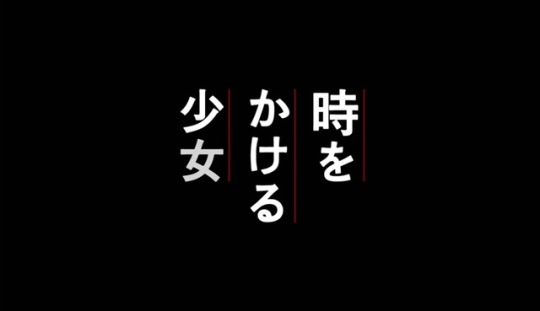
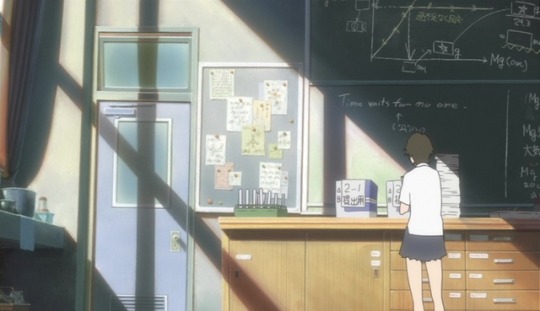


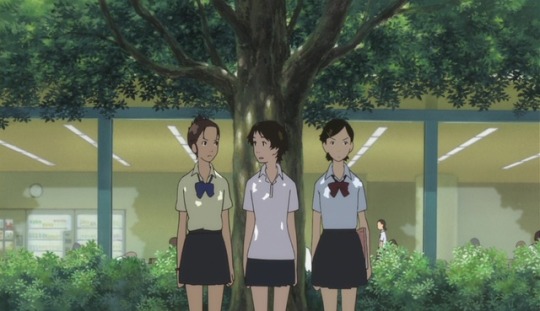
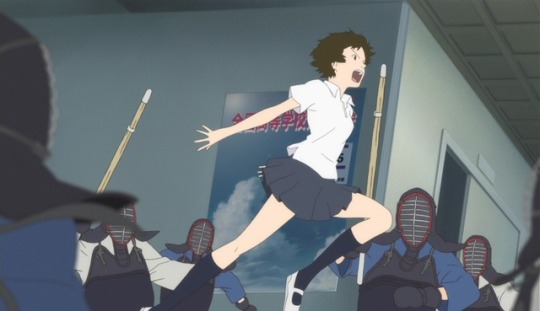

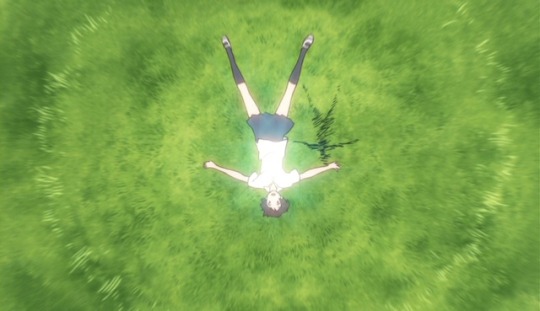

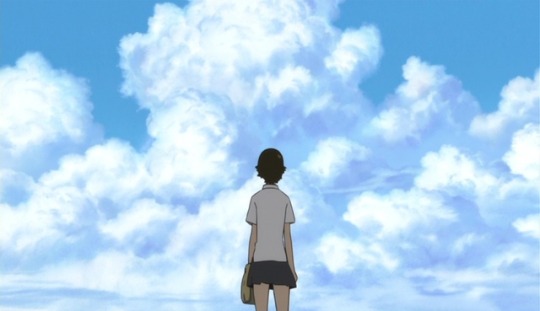
The Girl Who Leapt Through Time (2006) Director - Mamoru Hosoda, Cinematography - Yoshihiro Tomita "If today... If today were a normal day, there wouldn't have been any problems. But... I'd forgotten that today was an extremely unlucky day. It's crazy... but I'm going to die. This is it. If I had known, I would have gotten up earlier. I wouldn't have slept in. Wouldn't have been late. Done a better job on my tempura. Avoid being knocked over by stupid boys. And today was supposed to be a NICE day..."
#scenesandscreens#the girl who leapt through time#mamoru hosoda#Yoshihiro Tomita#Riisa Naka#Takuya Ishida#Mitsutaka Itakura#Ayami Kakiuchi#Mitsuki Tanimura#Yuki Sekido#Utawaka Katsura#Midori Ando#Fumihiko Tachiki#Keiko Yamamoto#Shiori Yokohari#Sonoka Matsuoka#Takayuki Handa#Maho Kurashima
54 notes
·
View notes
Text
What’s In a Book? Part 29
While going through my collection I managed to find a few books that have yet to be featured on here yet. I decided to go with this one as, upon further review, I noticed that it actually contained a wealth of information that I had previously ignored ^^;

Image of book’s cover courtesy of myself.
Hana Akari: Showa Meigiren (はなあかり: 昭和名妓連) - Brilliant Flowers: The Showa Period’s Finest Geisha by Kobunshi Katsura (桂小文枝) (ISBN Unknown).
Date of Publication: 1988
Language: Japanese and English (Some Essays and Names Only)
Format: Hardcover
Availability: Can be found up for auction on a fairly regular basis
Price: Anywhere from $30 - $80
Errors: 0
This book is interesting, and that’s putting it mildly. Basically, it provides us with some of the best raw data for its time: The names of the most prominent geisha in each district of each city across all of Japan. It is a literal who’s who guide to the karyukai across the country in the late 1980s and is illuminating both in small essays that can be found at the front and back of the book explaining various schools and styles, but especially because it provides us with images, most in full color, of these amazing women.
The book overall is divided into regions which are then broken down further from there. The regions, cities, and districts of each named geisha are:
Part 1: Hokkaido (北海道)
Set 1: Asahikawa (旭川) - Kofune (小舟)
Set 2: Sapporo (札幌) - Onobu (お信), Itoko (い登子), Izumi (いづみ), and Charako (茶良子)
Set 3: Otaru (小樽) - Komomo (小桃), Mametarō (豆太郎), Kiku (㐂久), and Gorō (吾朗)
Set 4: Muroran (室蘭) - Chonko (﹅子)
Set 5: Hakodate (函館) - Nantoki (喃登希) and Kohide (小ひで)
Part 2: Tohoku (東北)
Set 1: Morioka (盛岡) - Tsutamaru (都多丸)
Set 2: Hanamaki (花巻) - Kimiko (君子) and Keiko (桂子)
Set 3: Aomori (青森) - Chame (茶目)
Set 4: Yamagata (山形) - Kochō (小蝶) and Kinta (金太)
Set 5: Akita (秋田) - Chiyogiku (千代菊)
Set 6: Obara (小原) - Ikkyū (一休), Aki (秋), and Kogiku (小菊)
Set 7: Fukushima (福島) - Sakura (さくら) and Hidemi (秀美)
Part 3: Kanto (関東)
Set 1: Takasaki (高崎) - Kiyoko (清子)
Set 2: Kusatsu (草津) - Sankoma (三駒) and Harumi (春美)
Set 3: Sarugakyo (猿ヶ京) - Kikutaro (菊太郎), Koshizu (小静)
Set 4: Minakami (水上) - Yutaka (ゆたか)
Set 5: Oyama (大山) - Kunika (くに香)
Set 6: Tokyo (東京) - Fumie (冨美江) and Wakaryū (若龍)
Set 7: Yugawara (湯河原) - Okame (お加目), Matsue (松栄), and Taeko (多恵子)
Part 4: Chubu (中部)
Set 1: Niigata (新潟) - Chiyogiku (千代菊)
Set 2: Takada (高田) - Kazuko (加津子)
Set 3: Shibata (新発田) - Renko (れん子)
Set 4: Kamidayamadatogura (上山田戸倉) - Senryū (泉竜), Suzuyakko (鈴奴), Saizō (才三), and Utamaru (歌丸)
Set 5: Kamisuwa (上諏訪) - Chiyomaru (千代丸)
Set 6: Isawa (石和) - Miki (美樹) and Koyakko (小奴)
Set 7: Kōfu (甲府) - Misako (美佐子), Kimika (君香), and Hisayo (久代)
Set 8: Inuyama (犬山) - Misako (みさ子)
Set 9: Hamamatsu (浜松) - Gonza (権三), Ichitarō (市太郎), Otomi (乙美), Koman (小萬), Eiko (栄子), Hatsutarō (初太郎), Tsuruchiyo (鶴千代), Yasuyo (泰世), Sakura (佐久良), Sachiko (幸子), Toshie (利枝), Komomo (小百々), Momoko (百々子), Fumiya (二三弥), Mitsugiku (光菊), Azuma (吾妻), Akiko (明子), and Ichiha (市羽)
Set 10: Kanazawa Higashi/East (金沢東) - Koman (小まん)
Set 11: Kanazawa Kazuemachi (金沢主計町) - Hitoha (一葉) and Kyōko (京子)
Set 12: Kanazawa Nishi/West (金沢西) - Mineko (峯子), Sachiyo (幸代), and Marichiyo (まり千代)
Set 13: Fukui (福井) - Makiko (真㐂子) and Yurako (由良子)
Set 14: Yuzawa (湯沢) - Katsumaru (勝丸) and Hiromi (弘美)
Set 15: Nagoya (名古屋) - Fukuchiyo (福千代), Takako (敬子), Tsuruko (つる子), Mitsuyo (光代), Kiku (喜久), Emiya (英美弥), Sanchō (三長), Satoyo (里代), Mitsu (未津), Ayako (あや子), Kinmaru (金丸), Naoe (直枝), Fukuwaka (福若), Hisae (比三枝), Mako (間子), Yasuko (康子), Toshino (とし乃), Koie (鯉恵), Mariko (まり子), Katsuko (かつ子), Maiko (舞子), Kingyo (金漁), Hideka (秀佳), Chiyoe (千代江), and Motoko (素子)
Part 5: Kinki (近畿)
Set 1: Osaka (大阪)
Part A: Osaka Minami (大阪南) - Yukiharu (雪春), Kikutsuru (菊つる), Kikue (菊恵), Rikimaru (力丸), Kinko (きん子), Yukiji (ゆき路), Kōjirō (廣二郎), Yoshiko (よし子), Terugiku (照菊), Midori (美登利), Hankō (はん幸), Kazumi (かず美), Yukie (ゆき恵), Yūka (勇花), Suzuka (鈴佳), Masako (まさ子), Fukuemi (福笑), Masachiyo (政千代), Kikufumi (菊二三), and Yūko (祐子).
Part B: Osaka Horie (大阪堀江) - Temari (てまり)
Part C: Osaka Shinmachi (大阪新町) - Hatsuko (はつ子) and Tamao (玉緒)
Part D: Osaka Kitashinchi (大阪北新地) - Komaka (駒香), Umesada (梅さだ), Umetomi (梅十三), Suzume (寿々女), and Umemitsu (梅充).
Set 2: Kyoto (京都)
Part A: Gion Kobu (祇園甲部) - Komame (小まめ), Hisae (久栄), Katsuyū (かつ勇), Haruyū (春勇), Miyokazu (美代一), Fukusono (フク園), Satoharu (里春), Yoshigiku (義㐂久), Kōsono (晃園), Teruha (照葉), Mamekō (まめ晃), Fukuyū (福勇), Kanoko (かの子), Machiko (真知子), Kumiko (玖見子), Kohana (子花), Takayū (孝友), Teruchiyo (照千代), Takeha (竹葉), Nakako (奈加子), Mameyū (まめ勇), Sonoko (その子), Tomichiyo (斗美千代), Yoshimame (芳豆), Kofumi (小富美), Kanoju (かの寿), Mamechiyo (豆千代), Katsufuku (かつ福), Mameji (豆爾), Toyochiyo (豊千代), Katsuji (佳つ二), Ichigiku (市季久), Mamezuru (まめ鶴), Koman (小萬), Michiko (道子), Miyokichi (美与吉), Aika (愛香), Teruyo (照代), Fumichiyo (富美千代), Kikuharu (菊春), Masuko (ます子), Momoko (桃子), Kosode (小袖), Chōji (長治), Tomigiku (冨菊), Komasu (小ます), Emiji (恵美二), Dan-e (だん栄), Koyū (小ゆう), Yukiryō (幸良), Hanachiyo (花千代), Miyuki (美ゆき), Masaru (勝), Kanoji (かの次), Hiromi (廣美), Kotomi (小とみ), and Ainosuke (愛之介).
Part B: Pontocho (先斗町) - Miyofuku (美代福), Hisakō (久幸), Raiha (来葉), Momiha (もみ葉), Ichiko (市子), Shinatomi (シナ富), Mameharu (豆治), Hisafumi (久富美), Ichisen (市扇), Mameyuki (豆幸), Umeyū (梅佑), Ichitoyo (市豊), Mameshizu (豆志津), Ichisono (市園), Mamechiyo (豆千代), Hisaroku (久ろく), Ichimitsu (市光), Momizuru (もみ鶴), Hide-e (英江), Tomizuru (富鶴), Emiju (笑寿), Fudeya (フデ哉), Miyosaku (ミヨ作), Ichihiro (市宏), and Shinateru (シナ照).
Part C: Gion Higashi (祇園東) - Toyoji (豊治), Fumie (章栄), Chika (ちか), Tsurukazu (つる和), Tsunekazu (つね和), Tsunehisa (つね久), Masuko (ます子), Toyohisa (豊寿), and Masako (満佐子).
Part D: Miyagawa Cho (宮川町) - Wakaharu (若晴). Kanae (叶恵), Fumichō (富美蝶), Mikiryū (三木竜), Wakachika (若千加), Fukukazu (ふく和), Toshiyū (敏祐), Suzuchiyo (鈴千代), Hinachō (雛蝶), Chikayoshi (千賀俊), Mieko (美恵子), Fukusome (冨久染), Tane-e (種栄), and Tanekazu (たね和).
Part E: Kamishichiken (上七軒) - Tei (てい), Emi (恵美), Katsukiyo (勝㐂代), Tamafuku (玉福), Fukuzuru (福鶴), Hisazuru (久鶴), Tsuruzō (鶴三), Hisawaka (久若), Tamaryō (玉龍), Shimeyo (〆代), Katsumaru (勝丸), Naoko (尚子), Kokimi (小㐂美), and Kohan (小はん).
Set 3: Nara (奈良) - Suzumi (須寿美)
Set 4: Genrō (彦桹) - Kikuyū (菊勇) and Masaya (政弥).
Set 5: Otsu (大津) - Omasa (おまさ)
Set 6: Kinosaki (城崎) - Tomiyū (富勇) and Kanoko (佳乃子)
Set 7: Wakayama (和歌山) - Kikuchiyo (菊千代)
Set 8: Shirahama (白浜) - Tsutagiku (蔦菊)
Set 9: Osaka Imasato (大阪今里) - Koito (小糸) and Kichihide (吉秀)
Set 10: Imasato (今里) - Kichitama (吉玉)
Set 11: Kyoto Shimabara (京都島原) - Hana Ōgi Tayū (花扇太夫)
Part 6: Chūgoku (中国) and Shikoku (四国)
Set 1: Tamatsukuri (玉造) - Naoko (尚子), Yae (八重), and Kishi (貴志).
Set 2: Okayama (岡山) - Yakko (奴) and Chizu (知寿)
Set 3: Takamatsu (高松) - Hamachiyo (浜千代)
Set 4: Matsuyama (松山) - Ippei (一平)
Set 5: Tokushima (徳島) - Fukuyo (福代) and Akiyo (明代)
Set 6: Kochi (高知) - Kimiryū (君龍) and Sadamaru (貞丸)
Part 7: Kyushu (九州)
Set 1: Hakata (博多) - Mieko (美恵子)
Set 2: Kurume (久留米) - Okiyo (お清)
Set 3: Ureshino (嬉野) - Hisamatsu (久松), Komatsu (小松), Koshin (小新), Hisaryū (久竜), and Marikō (まり幸).
Set 4: Isao (武雄) - Fumiya (文弥)
Set 5: Beppu (別府) - Mitsugiku (光菊), Fujikatsu (ふじ勝), Umesono (梅園), and Tomiko (富子)
Set 6: Kumamoto (熊本) - Ayako (あや子)
Set 7: Kagoshima (鹿児島) - Aimaru (愛丸)
The only areas that I noted are missing are some of the hot springs towns. I’m not too sure why they were skipped over, but it’s possible that the author did not have any connections to them.
The most informative part that I admit I skipped initially is the small print under each geisha’s name: their natori specialty, natori teachers, and natori names. This means that we can trace back what schools were the main specialty of each region going back decades. Since this is invaluable for anyone studying geisha over time, I’ll write in what schools were followed, but I will keep names a secret. Districts are as follows:
Part 1: Hokkaido (北海道)
Set 1 Asahikawa (旭川) - Kineya (杵屋)
Set 2: Sapporo (札幌) - Wakayagi (若柳) for dance and Tadeko (蓼胡) for song
Set 3: Otaru (小樽) - Fujima (藤間) for dance and Tadeko (蓼胡), Kineya (杵屋), Kiyomoto (清元), Shunnichi (春日), and Tokiwazu (常���津) for song.
Set 4: Muroran (室蘭) - None Given
Set 5: Hakodate (函館) - Tanaka (田中) for dance and Matsunaga (松永) for song.
Part 2: Tohoku (東北)
Set 1: Morioka (盛岡) - Tokiwazu (常磐津) for song.
Set 2: Hanamaki (花巻) - Wakayagi (若柳) for dance and Kineya (杵屋) for song.
Set 3: Aomori (青森) - None Given.
Set 4: Yamagata (山形) - Fujima (藤間) for dance.
Set 5: Akita (秋田) - None Given.
Set 6: Obara (小原) - None Given
Set 7: Fukushima (福島) - None Given.
Part 3: Kanto (関東)
Set 1: Takasaki (高崎) - Hanayagi (花柳) for dance and Okayasu (岡安) for song.
Set 2: Kusatsu (草津) - Hanayagi (花柳) for dance.
Set 3: Sarugakyo (猿ヶ京) - Kineya (杵屋) for song.
Set 4: Minakami (水上) - Kineya (杵屋) for song.
Set 5: Oyama (大山) - Kineya (杵屋)
Set 6: Tokyo (東京) - Taguchiko (田口湖) for dance and Kineya (杵屋) for song.
Set 7: Yugawara (湯河原) - Tanaka (田中) and Fujima (藤間) for dance and Tokiwazu (常磐津), Kineya (杵屋), and Tadeai (蓼相) for song.
Part 4: Chubu (中部)
Set 1: Niigata (新潟) - None Given.
Set 2: Takada (高田) - None Given.
Set 3: Shibata (新発田) - Okayasu (岡安) for song.
Set 4: Kamidayamadatogura (上山田戸倉) - Bandō (坂東) for dance and Tōsha (藤舎), Shunnichi (春日), Kineya (杵屋), and Kiyomoto (清元) for song.
Set 5: Kamisuwa (上諏訪) - Kineya (杵屋) for song.
Set 6: Isawa (石和) - Hanayagi (花柳) for dance and Mochizuki (望月) for song.
Set 7: Kōfu (甲府) - Hanayagi (花柳) for dance and Kiyomoto (清元), Okayasu (岡安), and Nagami (長巳) for song.
Set 8: Inuyama (犬山) - Nishikawa (西川) for dance and Kineya (杵屋) for song.
Set 9: Hamamatsu (浜松) - Fujima (藤間) and Fukuwara (福原) for dance and Kiyomoto (清元), Yoshimura (芳村), Shunnichi (春日), Nishikiharu (錦春), and Tokiwazu (常磐津) for song.
Set 10: Kanazawa East (金沢東) - Kamizaki (神崎) for dance.
Set 11: Kanazawa Kazuemachi (金沢主計町) - Fujima (藤間) for dance and Kineya (杵屋) and Mochizuki (望月) for song.
Set 12: Kanazawa Nishi/West (金沢西) - Nishikawa (西川) for dance and Tōsha (藤舎), Okayasu (岡安), and Kashida (堅田) for song.
Set 13: Fukui (福井) - Fujima (藤間) for dance and Utazawa (哥沢) for song.
Set 14: Yuzawa (湯沢) - None Given.
Set 15: Nagoya (名古屋) - Nishikawa (西川) for dance and Kiyomoto (清元), Tokiwazu (常磐津), Sumida (住田), Kineya (杵屋), Kishizawa (岸沢), Shunnichi (春日), and Fujimatsu (ふじ松) for song.
Part 5: Kinki (近畿)
Set 1: Osaka (大阪)
Part A: Osaka Minami (大阪南) - Onoe (尾上), Fujima (藤間), Bandō (坂東), and Hanayagi (花柳) for dance and Kiyomoto (清元), Kondo (今藤), Mochizuki (望月) and Tokiwazu (常磐津) for song.
Part B: Osaka Horie (大阪堀江) - Nishikawa (西川) for dance.
Part C: Osaka Shinmachi (大阪新町) - Nishikawa (西川) for dance and Kineya (杵屋), Shunnichi (春日), and Ogie (荻江) for song.
Part D: Osaka Kitashinchi (大阪北新地) - Nishikawa (西川) and Hanayagi (花柳) for dance and Kineya (杵屋), Tamura (田村), Uji (宇治), Tokiwazu (常磐津), Tagawa (田川), Kiyomoto (清元), and Yoshimura (吉村) for song.
Set 2: Kyoto (京都)
Part A: Gion Kobu (祇園甲部) - Inoue (井上) for dance.
Part B: Pontocho (先斗町) - Onoe (尾上), Nishikawa (西川), and Wakayagi (若柳) for dance and Tōsha (藤舎), Kondo (今藤), Nakamura (中村), Ogie (荻江), Bungo (豊後), Kineya (杵屋), and Tokiwazu (常磐津) for song.
Part C: Gion Higashi (祇園東) - Fujima (藤間) for dance and Tokiwazu (常磐津), Yanagi (柳), Nakamura (中村), Kineya (杵屋), and Tōsha (藤舎) for song.
Part D: Miyagawa Cho (宮川町) - Umemoto (楳茂都), Wakayagi (若柳), and Rokugō (六鄕) for dance and Kondo (今藤), Bungo (豊後), Kiyomoto (清元), Yanagi (柳), Yamakishi (山岸), Utazawa (哥沢), Tadeko (蓼胡), and Umeya (梅屋) for song.
Part E: Kamishichiken (上七軒) - Hanayagi (花柳) for dance and Tokiwazu (常磐津), Shunnichi (春日), Toyomoto (豊本), Kiyomoto (清元), Tōsha (藤舎), and Kiyoyuki (清之) for song.
Set 3: Nara (奈良) - Kineya (杵屋) for song.
Set 4: Hikone (彦桹) - None Given.
Set 5: Otsu (大津) - Yanagi (柳) for song.
Set 6: Kinosaki (城崎) - Wakayagi (若柳) and Onoe (尾上) for dance.
Set 7: Wakayama (和歌山) - Onoe (尾上) for dance.
Set 8: Shirahama (白浜) - Okayasu (岡安) for song.
Set 9: Osaka Imasato (大阪今里) - Kineya (杵屋), Shunnichi (春日), and Kiyomoto (清元) for song.
Set 10: Imasato (今里) - None Given.
Set 11: Kyoto Shimabara (京都島原) - None Given.
Part 6: Chūgoku (中国) and Shikoku (四国)
Set 1: Tamatsukuri (玉造) - Fujima (藤間) for dance and Kineya (杵屋) for song.
Set 2: Okayama (岡山) - Onishi (小西) for dance.
Set 3: Takamatsu (高松) - Kiyomoto (清元) for song.
Set 4: Matsuyama (松山) - Kiyomoto (清元) and Tamura (田村) for song.
Set 5: Tokushima (徳島) - Yoshitō (芳膛) for dance and Kiyomoto (清元) and Tamura (田村) for song.
Set 6: Kochi (高知) - Kiyomoto (清元) and Tamura (田村) for song.
Part 7: Kyushu (九州)
Set 1: Hakata (博多) - Kondo (今藤), Shunnichi (春日), and Kashida (堅田) for song.
Set 2: Kurume (久留米) - Tokiwazu and Shunnichi (春日) for song.
Set 3: Ureshino (嬉野) - Hanayagi (花柳) and Fujima (藤間) for dance and Matsunaga (松永) and Tagoto (田毎) for song.
Set 4: Isao (武雄) - Fujima (藤間) for dance.
Set 5: Beppu (別府) - Tokiwazu (常磐津), Kiyomoto (清元), and Hisago (瓢) for song.
Set 6: Kumamoto (熊本) - Hanayagi (花柳) for dance and Kondo (今藤) for song.
Set 7: Kagoshima (鹿児島) - Kineya (杵屋) and Tagoto (田毎) for song.
The reason why this book has no ISBN is because it was self published. The original cover price was ¥30,000, which is almost $300 USD. This price was likely set due to the vast amount of research done, including acquiring the many photographs, and printing costs. This price was also likely due to it being targeted at serious karyukai connoisseurs as that price in the 1980s would have been much higher now due to inflation. Nowadays you don’t have to pay as much for this book as most Japanese sellers see it as outdated and it can be found quite regularly on Japanese retail sites, such as Yahoo Japan Auctions or Rakuten.
The only “errors: that I could find were some spelling issues, but that’s because they’re using the Japanese way of writing Romaji and not the Hepburn System. So, I’m not counting them as errors, but rather just making note of them to anyone who purchases this book.
Rating: ✪✪✪✪ (out of 5)
35 notes
·
View notes
Text
Osamake: Romcom Where the Childhood Friend Won't Lose Anime Adds Five Cast Members
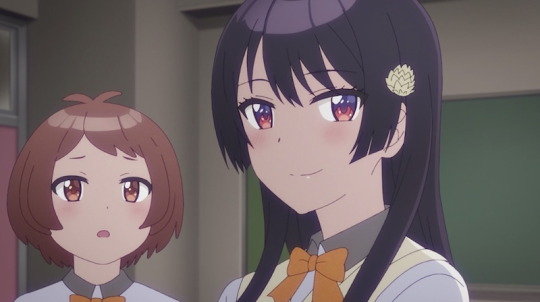
Based on the romantic comedy light novel series by Shuichi Nimaru, with illustrations by Ui Shigure, Osamake: Romcom Where the Childhood Friend Won't Lose is airing as part of the Spring 2021 anime season and streaming on Crunchyroll. The latest update for the series has five new cast members getting in on the fun, so see who's stepping into their respective roles below.
The latest additions include:
Tomoyo Takayanagi (Keiko Koyabu in Those Snow White Notes) as Rena Asagi
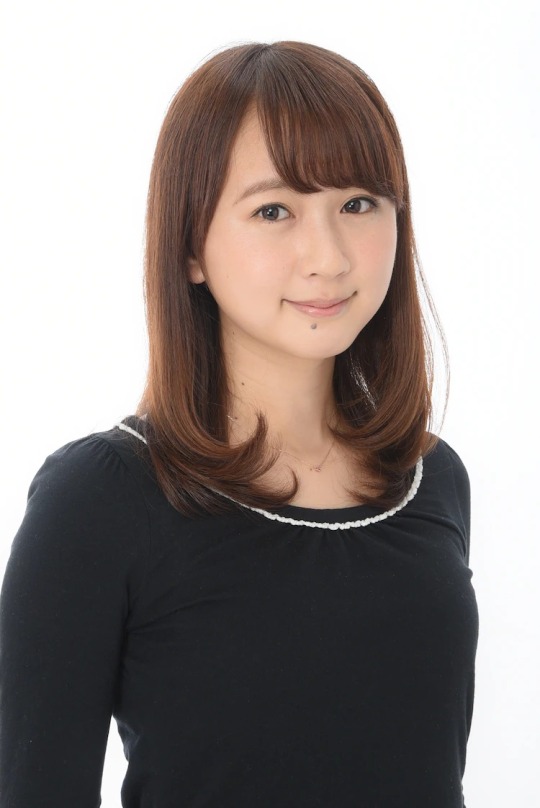
Akane Fujita (Sagiri Izumi in Eromanga Sensei) as Midori Shida
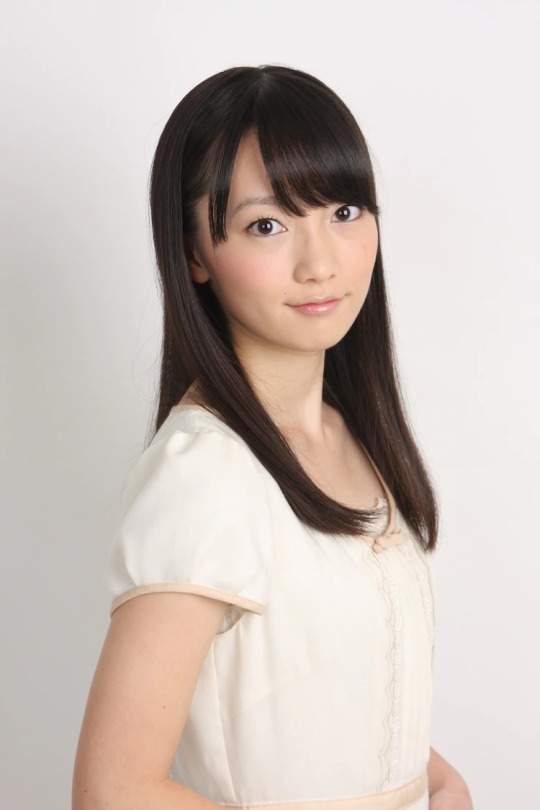
Miyuri Shimabukuro (Yuuna Yunohana in Yuuna and the Haunted Hot Springs) as Aoi Shida

Natsumi Hioka (Kotetsu Katsura in Witch Craft Works) as Akane Shida
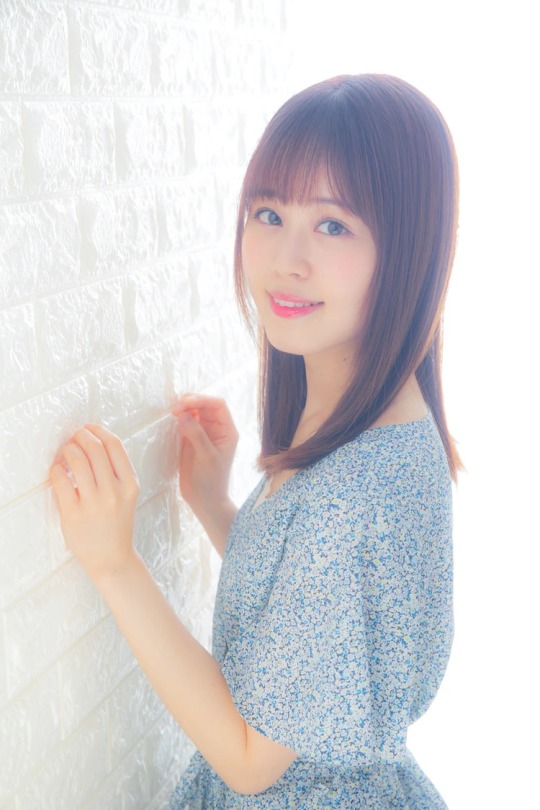
Kaede Hondo (Pony Tsunotori in My Hero Academia) as Shion Oragi
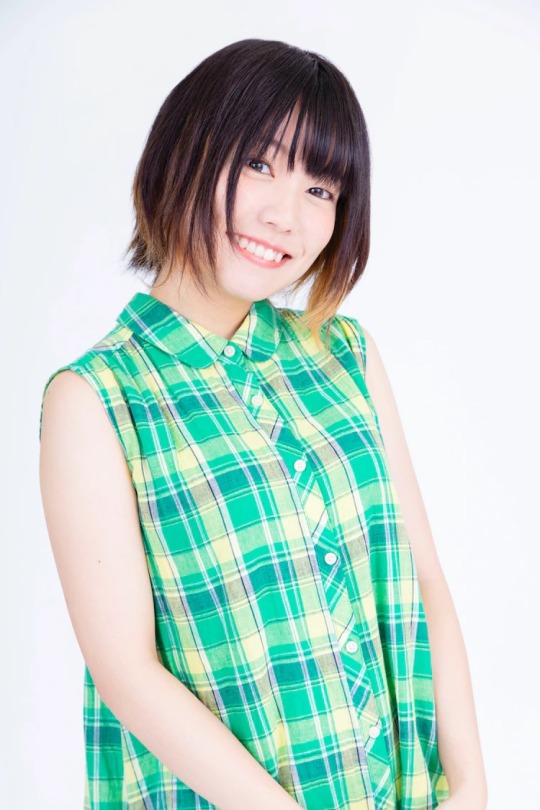
Key visual:

Here's how Crunchyroll describes the series:
She smiles just for me. Her name is Kachi Shirokusa and she's even an award-winning high school girl writer! And she's beautiful! I know that she's totally out of reach for me, a normal high school kid named Maru Sueharu! But I think something's there... No, there's definitely something there! Or so I thought... but Kachi has a boyfriend?! Seeing me depressed, my friend ever since we were little who's cute, cheerful, and loves to look after others, Shida Kuroha... who also apparently had no problem telling me that she likes me for some reason just suggested, "Let's get revenge."
Via Comic Natalie

-------
Joseph Luster is the Games and Web editor at Otaku USA Magazine. You can read his comics at subhumanzoids. Follow him on Twitter @Moldilox.
By: Joseph Luster
0 notes
Photo
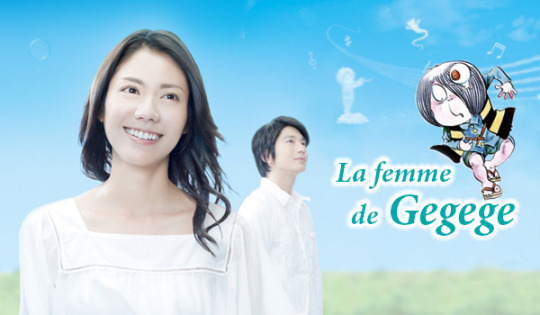
La femme de Gegege
Projet en cours
Titre original : ゲゲゲの女房Titre romanisé : Gegege No NyoboTitre alternatif : My Husband is a CartoonistType : DramaÉpisodes : 156Genre : Comédie, FamilleNationalité : JaponaisAnnée de diffusion : 2010Casting : Matsushita Nao, Mukai Osamu, Hoshino Gen, Kazama Morio, Kobayashi Kaito, Murakami Hiroaki, Okura Koji, Osugi Ren, Sugiura Taiyo, Suzuki Hiroki, Ujiki Tsuyoshi, Adachi Rika, Arimori Narimi, Hiraiwa Kami, Kotegawa Yuko, Matsumoto Runa, Matsuzaka Keiko, Minami Akina, Nogiwa Yoko, Omura Ayako, Sakurada Seiko, Takeshita Keiko, Umezawa Masayo, Yoshida Yo, Shinokawa Momone, Okano Maya, Katsura Asami, Asakura Erika, Miyazaki Masaru, Yoshikawa Hinako, Sato Miku, Mori Koko, etc.
Synopsis : Fumie Iida cherche à se marier mais n’y arrive pas à cause de sa grande taille. Elle reçoit un jour une proposition de mariage d’un certain Murai Shigeru, un mangaka de Tokyo.Ce drama est une adaptation de l’autobiographie de Nunoe Mura, la femme du célèbre mangaka Shigeru Mizuki.
OST Générique de début : Arigatou [Merci] de Ikimonogatari
Téléchargement :
Épisode 001
Épisode 002
Épisode 003
Épisode 004
Épisode 005
Épisode 006 Sortie
Épisode 007 Bientôt
Épisode 008 Bientôt
Épisode 009 Bientôt
Épisode 010 Bientôt
Épisode 011 Bientôt
Épisode 012 Bientôt
Épisode 013 Bientôt
Streaming :
Épisode 001
Épisode 002
Épisode 003
Épisode 004
Épisode 005
Épisode 006 Sortie
Épisode 007 Bientôt
Épisode 008 Bientôt
Épisode 009 Bientôt
Épisode 010 Bientôt
Épisode 011 Bientôt
Épisode 012 Bientôt
Épisode 013 Bientôt
C'est un drama de 156 épisodes mais chaque épisode ne dure que 15 min. Les Japonais appellent ce type de drama des asadora qui signifie "série du matin" car ils sont diffusés le matin et ne durent pas longtemps. Ils les regardent souvent en mangeant le matin. C'est une histoire passionnante qui montre la vie des Japonais juste après la 2e guerre mondiale ainsi que les aléas vers la route du succès d'un mangaka dans les années 1980.
2 notes
·
View notes
Text
Nomes Japoneses Femininos – Mais de 100 deles! [de A a Z]
Listas de Nomes Japoneses Femininos existem ao monte na internet, mas hoje eu apresento para vocês uma lista com o Kanji ou Kana invés de apenas o nome. Juntamente traduzi ao pé da letra o significado dos kanjis do nome. Eu não garanto uma tradução 100% mas espero que gostem, ótima lista para aqueles que quer colocar o nome de sua filha ou animal.
Alguns dos significados eu coloquei o + entre 2 palavras para representar apenas o significado de cada kanji e não do nome inteiro, porque ai vai depender da interpretação da pessoa ao juntar as 2 palavras.
Lembrando que o significado é bastante raso e as vezes não faz sentido, porque necessita que a pessoa conheça o Kanji e sua essência para entender o profundo significado de cada nome. Recomendo que antes de decidir o nome de sua filha, faça uma longa pesquisa do significado desses ideogramas utilizado o dicionário jisho.
Para facilitar a busca, você pode apertar CTRL + F e escrever o nome que você procura. Espero que gostem dessa lista de nomes japoneses para mulheres! xD Faça uma boa escolha!
Nomes japoneses femininos com a letra A
AI ( 1: 藍, 2: 愛): Significa 1) “índigo” ou 2) “amor”.
Aika (愛 佳): Significa “canção de amor”.
AIKO (愛 子): Significa “criança de amor.”
AIMI (愛美): Significa “amor + beleza.”
AKANE (茜): Significa “vermelho brilhante.”
AKEMI (明 美): Significa “beleza brilhante.”
AKI (1- 秋, 2- 明, 3- 晶): (unissex) que significa: 1) “outono”. 2) “Luz e amanhecer ” 3) “brilhante”.
AKIKO (1- 秋子, 2- 明子, 3- 晶 子): Significa 1) “criança outono” ou 2) “criança brilhante” ou 3) “criança espumante.”
AKIRA (1- 明, 2- 亮): (unissex) significa 1) “brilhante” ou 2) “claro”.
AMAYA: Significa “chuva da noite.” (Sobrenome)
AOI (1- 碧, 2- 葵): (unissex) Significa 1) “Azul” ou 2) “hollyhock.”
Arisu (ア リ ス): Forma japonesa de Alice.
ASAMI (麻美): Significa “beleza da manhã.”
ASUKA (明日香): Significa “fragrância do amanhã.”
Atsuko (1- 篤子, 2- 温 子): Significa 1) “criança + tipo ” ou 2) “criança morna”.
Avaron (ア ヴ ァ ロ ン): Significa “ilha das maçãs”.
AYA (1- 彩, 2- 綾): Significa 1) “colorido” ou 2) “design.”
Ayaka (1- 花 彩, 2- 彩 華): Significa 1) “cor-flor” ou 2) “cor-pétala.”
AYAKO (1- 彩子, 2- 綾子): “. Criança-projeto” significa 1) “cor-criança” ou 2)
Ayame (菖蒲): Significa “flor de íris.”
Ayano (1- 彩 乃, 2- 綾 乃): Significa 1) “minha cor” ou “meu projeto.”
AYUMI (あ ゆ み): Significa “ritmo, passear, a pé.”
AZUMI (あ ず み): Significa “residência segura.”
Nomes japoneses femininos com a letra C
CHIASA: Significa “mil manhãs.”
CHIE (恵): Significa “sabedoria”.
Chieko (恵 子): Significa “filho sábio.”
Chiharu (千 春): Significa “mil nascentes.”
Chikako (千 香 子): Significa “criança muito perfumada.”
CHINATSU (千 夏): Significa “mil verões”.
CHIYO (千代): Significa “mil gerações”.
Chiyoko (千代 子): Significa “filho de mil gerações.”
CHO: Variante da ortografia japonesa Chou, que significa “borboleta”.
CHOU (蝶):significa borboleta
Nomes japoneses femininos com a letra E
EIKO (栄 子): Significa “filho de vida longa” ou “criança esplêndida.”
EMI (1- 恵 美, 2- 絵 美): Significa 1) “bênção e bonita” ou 2) “bela imagem.”
EMIKO (1- 恵 美 子, 2- 笑 子): “. Criança sorrindo” significa 1) “criança bonita” ou 2)
ERI (絵 理): Significa “abençoado e prêmio.”
Etsuko (悦子): Significa “criança alegre.”
Nomes japoneses femininos com a letra F
FUJI (富): Possivelmente significa “glicínias”.
FUMIKO (文 子): Significa “filho de beleza valorizada.”]
Nomes japoneses femininos com a letra G
GINA: Significa “prateado”. Compare com outras formas de Gina.
Nomes japoneses femininos com a letra H
HANA (花): Significa “favorito” ou “flor.”
Hanako (花子): Significa “flor + criança.”
HARU (1- 晴, 春 2-, 3- 陽): (unissex) Significa 1) “esclarecer,” 2) “primavera”, ou 3) “sol, luz solar.”
HARUKA (遙, 遥, 悠, 遼): Significa “distância”.
HARUKI (春樹): Significa “árvore da primavera.”
Haruko (は る こ): Significa “primavera + criança.”
Harumi (春 美): Significa “Primavera + Bela”.
Hideko (秀 子): Significa “criança esplêndida.”
HIKARI (光): (unissex) Significa “brilho”.
Hikaru (輝): Significa “brilho”.
HIRO (1- 裕, 2- 寛, 3- 浩): (unissex) Significa 1) “abundante”, 2) “generoso, tolerante”, ou 3) “próspero”.
HIROKO (1- 裕子, 2- 浩子, 3- 寛 子): Significa 1) “criança abundante,” 2) “criança próspera”, ou 3) “criança generosa.”
HIROMI (1- 裕美, 2- 浩 美, 3- 寛 美): Significa 1) “beleza abundante,” 2) “beleza próspera”, ou 3) “generosa beleza.”
HISAKO (久 子): Significa “filho de vida longa.”
Hisoka (密): Nome unissex japonês que significa “reservado”.
HITOMI (瞳): Significa “discípulo (do olho).” Esse nome é geralmente dado a meninas com olhos bonitos.
HOSHI (星): Significa “estrela”.
HOTARU (蛍): Significa “vaga-lume; relâmpago”.
Nomes japoneses femininos com a letra I
Izanami (イ ザ ナ ミ): Nome do mito japonês da esposa de Izanagi, que significa “mulher que convida”.
IZUMI (泉): Significa “fonte”.
Junho (順): Nome unissex japonês que significa “obediente”.
JUNKO (1- 順子, 2- 純 子): Significa 1) “. Criança pura” ou 2) “criança obediente”
Nomes japoneses femininos com a letra K
KAEDE (楓): Nome unissex japonês que significa “Bordo (arvore)”.
KAME: Significa “tartaruga (símbolo de longa vida).”
Kameko (上 子): Variant ortografia do japonês Kamiko, que significa “criança superior.”
KAMEYO: Significa “tartaruga (símbolo de longa vida).”
Kamiko (上 子): Significa “criança superior.”
KAORI (香 織): Significa “fragrância de tecelagem.”
KAORU (薫): Significa “fragrância”.
KASUMI (霞): Significa “névoa”.
Katsumi (勝 美): Significa “beleza vitoriosa.”
KAYO: “. Bonito
Kazue (一 恵): Significa “sucursal; primeira bênção; harmonioso.”
Kazuko (1- 和 子, 2- 一 子): “significa 1) “criança harmoniosa / pacífica” ou 2) Filho único
Kazumi (和美): Significa “beleza harmoniosa.”
KEI (1- 恵, 2- 慶, 3- 桂, 4- 敬, 5- 啓, 6- 圭, 7- 景): Significa 1) “abençoou, de sorte”, 2) “feliz”, 3) “árvore de Katsura,” 4) “respeitoso”, 5) “primavera”, 6) “jóia quadrado”, ou “ensolarado”.
KEIKO (1- 恵子, 2- 慶 子, 3- 桂子, 4- 敬 子, 5- 啓 子, 6- 圭子, 7- 景 子): Significa 1) “abençoado, criança de sorte,” 2) “criança feliz” 3) “árvore katsura + criança,” 4) “criança respeitosa”, 5) “criança primavera”, 6) “criança + jóia”, ou 7) “criança + ensolarado.”
KIKU (菊): Significa “crisântemo”.
KIMI (君): Significa “senhor, nobre.” Originalmente significa você.
Nomes japoneses femininos K-M
KIMIKO (1- 后子, 2- 君子): “. Criança nobre” / “criança imperatriz”.
KIN (欽): Nome unissex japones que significa “ouro”.
Kiyoko (清 子): Significa “criança pura.”
Kiyomi (清 見): Significa “beleza pura.”
KOU (1- 幸, 2- 光, 3- 康): “felicidade”, 2) “Luz”, 3) “paz”.
Kohaku (琥珀): Significa “âmbar”.
Kotone (琴音): Significa “som da harpa.”
Kumiko (久 美 子): Significa “longo tempo + criança bonita.”
KYO (1- 杏, 2- 京, 3- 協, 4- 郷): 1) “damasco,” 2) “capital”, 3) “cooperação”, ou 4) “aldeia. “
KYOKO (恭子): Significa “filho da cidade.”
Kyou (1- 杏, 2- 京, 3- 協, 4- 郷): (unissex) Significa 1) “damasco,” 2) “capital”, 3) “cooperação”, ou 4) “aldeia”.
Nomes japoneses femininos com a letra M
MADOKA (1- 円, 2- 円 花): (unissex) Significa 1) “círculo” 2) “círculo + flor.”
MAI (舞): Significa “dança”.
MAIKO (舞 子): Significa “dança + criança.”
MAKI (1- 真 紀, 2- 真 希, 3- 真 貴, 4- 真 樹): Significa 1) “verdadeira crônica / registro,” 2) “verdadeira esperança”, 3) “verdadeiro + precioso”, 4) “verdadeiro + árvores de madeira. “
MAKOTO (誠): Nome unissex que significa “sincero, verdadeiro.”
MANA (愛): Significa “carinho, amor.”
Manami (1- 愛美, 2- 愛 海): significa 1) “beleza afetuoso” ou 2) ” Mar amor”.
MARI: Forma japonesa de maria.
MARIKO (真 里 子): Significa “verdadeiro filho da aldeia.”
MASA (1- 正, 2- 雅, 3- 昌, 4- 真, 5- 政, 6- 将): 1) “correto, apenas,” 2) ” elegante “, 3)” florescente, próspero “4)” genuíno, verdadeiro “, 5)” governar, política, “6)” militar “.
MASAKO (1- 雅子, 2- 昌 子): “. Criança florescente” significa 1) “criança elegante” ou 2)
MASAMI (雅美): Significa “beleza elegante.”
Masumi (真澄): Nome unissex que significa “verdadeira lucidez”.
Masuyo (益 世): Significa “beneficiar o mundo.”
MAYUMI (真 弓): Significa “verdadeiro arco (arco e flecha).”
MEGUMI (恵): Significa “bênção”.
MI (美): Significa “beleza”.
Nomes japoneses femininos M
MICHIKO (美智子): Significa “criança bonita e sábia.”
MIDORI (緑): Significa “verde e verdejante.”
Mieko (美 枝子): Significa “criança bonita + bênção.”
MIHO (1- 美 保, 2- 美 帆): significa 1) “garantia linda” ou “. Belo + vela”
MIKA (美 香): Significa “bela fragrância.”
MIKI (1- 美 紀, 2- 美 姫, 3- 美 樹, 4- 美 貴): significa 1) “bela crônica,” 2) “bela princesa”, 3) “bela árvore”, ou “. Beleza inestimável”
Minako (美奈子): Significa “criança bonita.”
MINORI (里): Nome unissex que significa “verdade”.MISAKI (美 咲): Significa “florescer da beleza.”Mitsuko (光子): “. Brilhando criança” significa “filho da luz” ouMitsuru (満): Nome unissex que significa “cheio” ou “crescendo”.
MIWA (1- 美 和, 2- 美 輪, 3- 三 和, 4- 三輪): Significa 1) “a beleza, harmonia,” 2) “beleza, anel / roda”, 3) “três, harmonia,” ou 4) “três, anel / roda.”
MIYAKO (美 夜 子): Significa “bela noite criança.”
Miyoko (美 代 子): Significa “criança bonita geração.”
MIYUKI (1- 美幸, 2- 美雪, 3- 深雪): Significa 1) “bela fortuna / felicidade,” 2) “neve bonita”, ou 3) “neve profunda.”
Mizuki (美 月): Significa “bela lua.”
MOE (萌): Significa “florescente”.
MOMO (モ モ): Significa “pêssego”.
Momoe (百 恵): Significa “cem bênçãos.”
MOMOKO (桃子): Significa “criança pêssego.”
Moriko (森 子): Significa “filho da floresta.”
Nomes japoneses femininos com a letra N
NANA (ナ ナ): Significa “sete”. Dependendo do Kanji utilizado pode significar qualquer coisa. (奈々、那奈、菜奈、菜々)
NAO (1- 直, 2- 尚): (unissex) Significa 1) “dócil” ou 2) “estimado”.
NAOKI (直樹): Nome unissex japonesa que significa “árvore dócil.”
Naoko (1- 直子, 2- 尚 子): Significa 1) “criança dócil” ou 2) “criança estimado.”
NAOMI (直 美): Significa “acima de tudo; beleza.” Compare com uma outra forma de Naomi.
Natsuko (夏 子): Significa “criança verão.”
Natsumi (夏 美): Significa “beleza do verão.”
Nobuko (信 子): Significa “filho fiel”.
NORI (1- 儀, 2- 典, 3- 則, 4- 法): (unissex) Significa 1) “cerimónia, regalia,” 2) “código, precedente”, 3) “modelo, regra, norma,” 4 ) “lei, regra.”
NORIKO (法子 ou 典 子): Significa “filho da lei” ou “filho exemplar.”
Nomes japoneses femininos com a letra R
RAN (蘭): Significa “lírio” ou “orquídea”.REI (1- 鈴, 2- 零, 3- 麗, 4- 霊): Significa 1) “sino,” 2) “chuva silenciosa” ou 3) “lovely”, 4) “espírito.”
REIKO (麗 子): Significa “criança encantadora.”
REN (蓮): Significa “lírio de água.”
RIE (理 恵): Significa “valorizado bênção.”
RIKA (泉): Significa “valorizado fragrância.”
RIKO (理 子): Significa “jasmim + criança.”
RIN (凛): Significa “frio, digna, grave.”
RYO (1- 亮, 2- 遼, 3- 諒, 4- 涼): (unissex) Significa 1) “brilho,” 2) “distante”, 3) “realidade”, 4) “refrescante”.
RYOKO (1- 亮子, 2- 涼子): Significa 1) “criança brilhante” ou 2) “criança refrescante.”
Nomes japoneses femininos com a letra S
SACHIKO (幸 子): Significa “criança feliz.”
SAKI (咲): Significa “flor.
”Sakiko (咲 子): Significa “florescer criança; criança mais cedo.”
SAKURA (桜): Significa “flor de cerejeira”.
SAYURI (小百合): Significa “lírio.”
Setsuko (節 子): Significa “criança + temperada.”
LOG: Significa “luxuriante”.
Shigeko (成 子): Significa “criança luxuriante.”
SHIKA (鹿): Significa “veado”.
Shinju (真珠): Significa “pérola”.
Shiori (詩織): Significa “poema; tecer”.
Shizuka (静香): Significa “tranqüila”.
Shizuko (静 子): Significa “criança quieta.”
SORA (空): Nome unissex que significa “céu”.
Sumiko (澄 子): Significa “criança com pensamento claro / puro.”
SUSUMU (進): Significa “progredindo”.
Suzu (鈴): Significa “sino”.
Nomes japoneses femininos com a letra T
TAKAKO (1- 隆子, 2- 孝子, 3- 貴子, 4- 敬 子): Significa 1) “criança elevada,” 2) “filho piedoso”, 3) “filho nobre”, ou “criança respeitosa.”
TAKARA (宝): Significa “tesouro”.
Tamiko (民 子): Significa “filho do povo.”
Teruko (照 子): Significa “brilhar + criança.”
TOMIKO (冨美子 ou 美子): Significa “a fortuna riqueza + filho”.
TOMOKO (1- 友 子, 2- 子 知, 3- 智子): Significa Criança sabia
Toshiko (敏 子): Significa “criança inteligente.”
Tsukiko (月 子): Significa “criança de lua”.
Nomes japoneses femininos com a letra U
UME (梅): Significa “flor de ameixa”.
Umeko (梅子): Significa “flor de ameixa criança.”
Nomes japoneses femininos com a letra Y
Yasuko (康 子): Significa “criança pacífica”.
YOKO (1- 洋子, 2- 陽 子): “. Criança ensolarado” significa 1) “estrangeira / criança oceano” e 2)
YORI (よ り): Nome unissex que significa “servo”.
YOSHI (1- 義, 2- 吉, 3- 良): 1) “correto”, 2) “bem, feliz,” e 3) “Bom, agradável”Yoshie (1- 佳 江, 2- 由 栄, 3- 淑 恵, 4- 好 恵): 1) “rio bonito”, 2) “causar-Prosper / florescer, 3)” boa graça “, e 4)” Nice favor / graça.”
Yoshiko (1- 好 子, 2- 芳子, 3- 良 子): Significa 1) “filho favorito” 2) “criança perfumado,” e 3) “bom filho”.
YUKA (1- 由 佳, 2- 佑 香): Significa 1) “causar-bom” e 2) “perfumado / incenso.”
YUKI (1- 幸, 2- 雪):; “.Significa Felicidade e Boa sorte ou Neve.
Yukiko (由 希 子): Significa “criança rara.”
YUKO (1- 優子, 2- 裕子, 3- 祐 子): Significa 1) “filho carinhoso,” 2) “filho de lazer,” e 3) “criança útil.”
YUMI (由 美): Significa “causar + beleza”.
YUMIKO (由美子): Significa “causa + Beleza + filho.”
Yuriko (百合 子): Significa “100 + perfeito + Criança.”
5 / 5 ( 1 vote )
O post Nomes Japoneses Femininos – Mais de 100 deles! [de A a Z] apareceu primeiro em Papo de nerd.
from Papo de nerd https://papodenerd.com.br/nomes-japoneses-femininos/
0 notes
Video
The Japanese Short Film "NISHIKAN" /w English Subtitle from DRAWING AND MANUAL on Vimeo.
Do you have a home to remember?
Do you have a place that give you warmth?
A man who failed finding purpose of his life,
and a man who failed taking care of his daughter.
And the daughter who left home and got lost her way.
In a tiny rural town in Japan, there was a warm encounter.
And the long lasting bad feelings between the father and daughter dispelled.
A story that lights up the precious relationships and warm up their heart.
The short story, “Nishikan”.
You will find Japan’s true heart.
Produced by
City Of Niigata Nishikan Ward Office
city.niigata.lg.jp/nishikan/
Musashino Art University
kisode.com
Production
DRAWING AND MANUAL
drawingandmanual.jp
-------------------------------------------------------------------------------------------------------
Director : Tomohiro Shiiya Yume Tsukakoshi Sai Ito
Original Story : Ai Kanegae
Screenplay : Koji Karatsu Seiichi Hishikawa
Cast :
Ryota Kuwahara Takezumi Nishimura Ruko Kazuki Ishikawa Keisuke Matsubara Akira Miyakawa Sachie Miyajima Sohei Ogura Kazuo Abe Kinichiro Eiduka Hatsumi Adachi Shizue Mochida Tomohiro Bando Takaaki Bando
Special Thanks
Maki High School Drama Club
Extra : Katsuzo Ishizoe Ryoko Ishizoe Michiko Saito Miwa Kamimura Hiroshi Murai Koichi Goto Hideo Yoshida Masafumi Hanyu Sumii Yoshida Kikui Takeuchi Haruichi Kubota
Producer : Kazuo Abe Makoto Fujii Katsuhito Ishizuka Miyuki Sawaguri Akira Miyakawa Takuya Watanabe Katsuyuki Kubota Takeshi Ishikawa Kazuki Hoshino
Excutive Producer : Seiichi Hishikawa
Line Producer : Yui Suzuki Takamasa Katsura
Assistant Director : Nene Sumiyoshi Momoka Kurajyo
Cinematographer : Kazuo Tsujimoto Takumi Gunji Mio Fukuda CHEN PENG
Live Recording : Takashi Hisamichi
Recording Assistant : Ryunosuke Sasamoto Nahoko Akiyama
Record : Namiko Osanai
Production Manager : Jyunichi Ichi Takashi Ueno Masaki Miyamoto Masahito Sakaguchi Takahiro Itabashi
Make Up&Styling : Madoka Takeda Fumiko Nakahara Mai Sakamoto Natsuki Koizumi
Logo Design : Hiroki Kawabe
Trailer Director : Takeru Shibuya
PR : Michiru Muraki (Drill Inc.)
Casting : Reina Washino (Baum and kuchen)
Car Coordination : Takanori Muto Shouri Hoshi (Wandervogel)
Music : Shinya Kiyokawa
Recording Engineer : Mikihiko Ishibashi Yukinari Matsumoto (HEACON STUDIO)
Soundtrack :
Title Music
The Wisely Brothers
“Yaoya"
album [seaside81]
©2016 LASTRUM Music Entertainment Inc.
thewiselybrothers.tumblr.com
Nabowa
"collage"
"thank you!"
album [Nabowa]
©2010 magie/bud music inc./AWDR/LR2/BounDEE, Inc.
“Ruderadio"
album [DUO]
“Suiyoubi-no-umbrella"
"You and I"
album [Nabowa 4]
nabowa.com
Kanami Tazoe
“Matane-no-Yakusoku"
album [ON]
tazoekanami.com
Shinya Kiyokawa
"Handkerchief"
Ending Theme Song
Minami Honobe
“itsumademo"
Music Collaboration : kenbow Takuma Kawagoe Risa Satohara Hiroyuki Himeno
Filming In Cooperation With :
KakashiIwamuyoya
Hamamatsuya
Takarayama Brewery
Iwamuro Confectionery
Bougainvillea
Shugetsu Temple
Maki High School
Iwamuro Hot Spring Tourism Association
Maki Tourism Association
Kakudahama Tourism Association
MILL
Musashino Art University
Special Thanks : Shingo Miyajima Noritaka Moriguchi Keiko iino Ai Natori Mizue Kawamura Tatsuniwa Doi Dairo-kai Nishikan Wara Art Westival ALL Crew Musashino Art University Science of Design
Dedicated To
Erika Tsukakoshi
1 note
·
View note
Text
I want to officially introduce my new Hakuouki OC Keiko
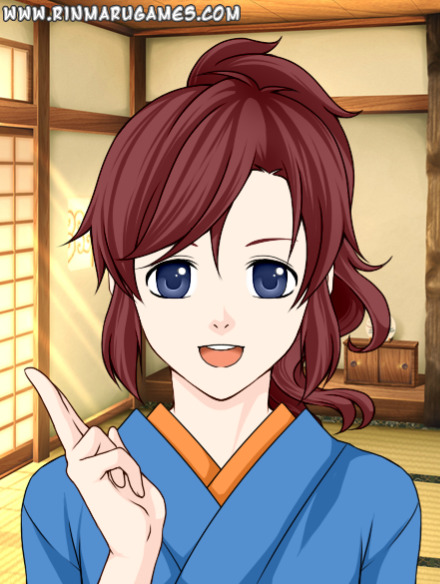
▌NAME : Katsura Keiko
▌AGE : 19 (in September 1864)
▌HEIGHT : 5 ft, 2 in. (1,58 m)
▌SPECIES : Human
▌GENDER : Female
▌BODY TYPE : Petite
▌EYE COLOUR : Dark Blue
▌HAIR COLOUR : Mahogany Brown
▌BIRTHDAY : June 9th 1845
▌RESIDENCE : Various Ryokan, among them the Teradaya. (Born in Hagi)
▌MARITAL STATUS : Unmarried
▌ALIGNMENT : Chaotic Good
▌ZODIAC SIGN : Gemini
▌MBTI : ENFP
▌ENNEGRAM TYPE : cp 6 with a strong 7 wing
▌PET : None (at the beginning of her story)
▌COLOUR : Blue, Yellow.
▌FLOWER : Sunflower
▌SEXUALITY : Heterosexual
Keiko was born into a Samurai family in Hagi, Choshu Domain. Her father, Katsura Keisuke, was executed in 1859 during the Ansei Purge, for his involvement with the Sonno joi movement. Keiko was then taken in by one of her father’s friends, the Choshu retainer Takasugi Shinsaku. She hates the Tokugawa Shogunate passionately and helps Takasugi, to whom she is deeply loyal, to achieve his goal of removing the Bakufu from power in every way she can. Keiko often works together with Shiranui, Sakamoto and Nakaoka, but also with her not-as-distant-as-she-would-like-to cousin, Katsura Kogoro.
(Avatar created with rinmaru’s avatar creator)
6 notes
·
View notes